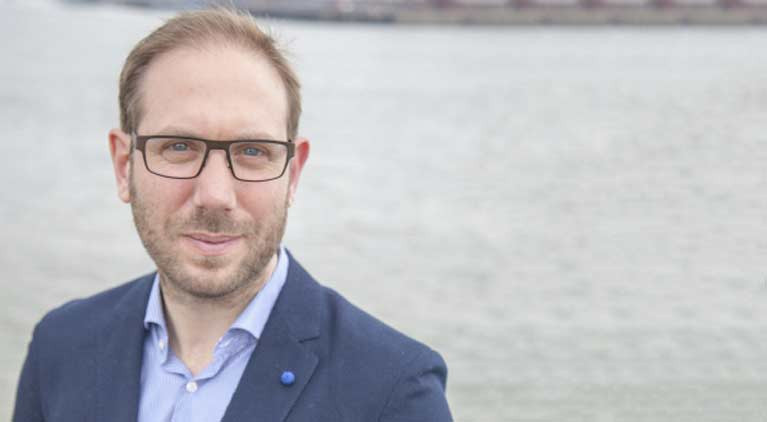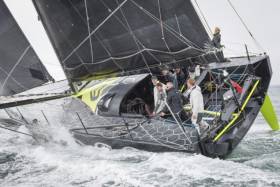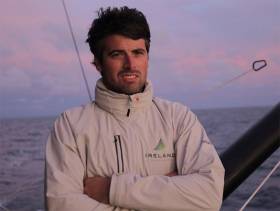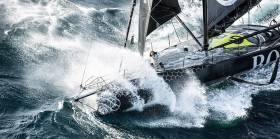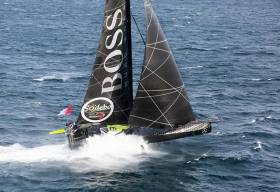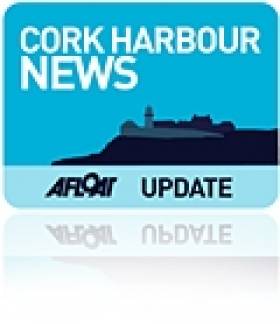Displaying items by tag: Stewart Hosford
A new team has been created in Barcelona to represent the city, region and country to challenge for the Youth and Women’s America’s Cup in 2024.
SAILTEAM BCN is a collaboration between an experienced group of sailors and campaign managers together with the Real Club Náutico de Barcelona (RCNB).
They have received approval from America’s Cup Event Management Company (ACE) and Emirates Team New Zealand to be the Spanish challenger for the event in 2024.
Heading up the team will be legendary Catalan sailor Guillermo Altadill and experienced international team manager Stewart Hosford, a Cork Harbour yachting stalwart and CEO of Sir Keith Mills’ pan-global sports investment group Origin Sports.
Among the team’s objectives are to purchase and run two newly released AC40 race boats with a full America’s Cup team structure, and to recruit talented youth and female sailors from across Spain in an open, application-based process — building a platform of talent with pathways towards future competition.
The team have already commissioned the design of a team base in Port Vell in Barcelona and are in discussions with a number of investors and sponsors to support the initiative.
Team principal Guillermo Altadill said: “I have participated in a number of America’s Cups and the opportunity to build a Spanish team and harness the incredible sailing talent from across this country is an incredibly exciting opportunity for me.
“As a team we will proudly represent Barcelona and our wider country to show the world that Spain is a leading sailing nation and to be home favourites for the Cup in 2024. What has been incredibly impressive to me already is the amount of interest and talent that this opportunity is attracting already.”
Jordi Puig, president of the RCNB said: “Our club has been supporting the America’s Cup bid since the beginning and we have been in informal discussions for a number of months with SailTeam BCN and last week we formed an agreement that, we as a yacht club are incredibly excited by.
“Our club is 100% behind the team and the America’s Cup event in Barcelona and we look forward to supporting the Team in their ambition to win the Youth and Women’s America’s Cup in 2024.”
Grant Dalton, chief executive of ACE added: “Guillermo and Stewart, together with the yacht club here in Barcelona have put together a world-class plan and team and as the event authority we are delighted to back them as the local and Spanish Team to compete in [the] Women’s and Youth America’s Cup as part of AC37, creating pathways for the next generation of local sailors to compete in the America’s Cup.”
As Sail-World reported in July, both Women’s and Youth America’s Cup regattas will be contested between 12 teams split into two pools of six for an initial fleet race series.
The first pool will comprise teams entered and competing in the America’s Cup, with the second pool formed by independent yacht club entries that qualify to enter under the nationality clause of the 37th America’s Cup Protocol.
Cork Harbour based Stewart Hosford is CEO of Sir Keith Mills’ pan-global sports investment group Origin Sports. He moved from the corporate world of banking in 2010 to take the helm at Alex Thomson Racing before embarking on his latest role where he is expanding his horizons from ocean racing to a broad portfolio of other sports properties and prospects.
A January 2015 Afloat Sailor of the Month for his role with Thomson and Hugo Boss, this week Hosford has given an in-depth interview to Tip and Shaft, a free French weekly newsletter about competitive sailing.
The interview is here
I got to helm Hugo Boss for a while on Tuesday off Cork Harbour. The tiller surprised me. I thought, with the size and length of this IMOCA 60 round-the-world ocean racer, I would be holding a heavy tiller, requiring a lot of effort. It was light and the boat quickly responsive. The grinder, which I tried later, was different, heavy and demanding effort for the main and headsails, with serious sheet loads. A very impressive boat, a foiler, “nothing too complicated in the equipment,” I was told, everything capable of repair by the solo sailor.” The boat designed and built in weight for maximum speed achievement.
I was aboard to meet Cork sailor Nicholas ‘Nin’ O’Leary and Alex Thomson who raced it around the world in the last Vendee Globe, finishing second in January after 74 days, 19 hours and 35 minutes at sea alone, becoming the fastest British solo sailor ever.
Royal Cork Yacht Club member ‘Nin’ O’Leary intends to become the first Irishman to complete the race when he sails the next one in 2020. “I’m a very competitive guy,” he told me aboard, “I’m going to do it.”
He has been sailing with Thomson working-up to that aim. They sailed the Fastnet Race last month and may do the Barcelona World Race next year.
Listen to ‘Nin’ O’Leary on the PODCAST and to Stewart Hosford, CEO of ‘Ireland Ocean Racing,’ formally launched in Cork this week to “increase the profile of competitive Irish ocean sailing and racing, inspire a new generation of competitors and deliver future Irish champions in the sport.”
Hosford managed the Hugo Boss Alex Thomson campaign of which he has been CEO, so brings to the Irish campaign significant experience and expertise. “This is the start of a journey,” he told me. “It will need sponsors and investors. What can be achieved is huge.”
Only 100 sailors have succeeded in sailing single-handed non-stop around the world and no Irish sailor has yet completed the Vendée Globe. A Cork sailor could do that, if the project gets the support needed.
Hugo Boss left Cork heading for Dublin to spread the word and the prospects for ‘Ireland Ocean Racing.’
LISTEN to the PODCAST here:
Tom MacSweeney presents THIS ISLAND NATION maritime programme on radio stations around Ireland
Nin O’Leary Skippers New Irish Contender For 2020 Vendée Globe Fleet
#ior2020 - Ireland’s opportunity to compete in global offshore sailing competitions received a boost yesterday (Tuesday 15 August) at the launch of Ireland Ocean Racing, a new initiative with aspirations to compete in the 2020 Vendée Globe.
Team skipper Nin O’Leary aims to be the first Irish sailor to complete the world’s only solo, non-stop and unassisted round-the-world sailing race – hopefully inspiring a new generation of Irish offshore sailors and racers along the way.
“This is an exciting day for Irish offshore sailing,” said Ireland Ocean Racing chief executive Stewart Hosford. “There is such a strong maritime heritage in Ireland and a long list of incredible sailors from Joe English, Damian Foxall, Justin Slattery, Gordon Maguire to Enda O’Coineen.
“We have many great achievements on the water already under our belts. Now is the time to pull together and create a focused plan to pave the way for some significant initiatives and achievements over the coming 10 years and beyond.”
Having managed the UK’s ocean sailing success story, the HUGO BOSS/Alex Thomson Racing campaign, for over a decade, the management of Ireland Ocean Racing believes it has significant experience and expertise in what it takes to create a winning strategy for Ireland in offshore racing.
“Sailors are incredible sportspeople, having to tackle all sorts of weather conditions on seas and oceans around the world,” said Hosford. “Whether competing individually or as part of team, the skills and acumen required for offshore yacht racing make it one of the most challenging sports today.
“Bringing the exciting sport to more people in Ireland is really important to Ireland Ocean Racing – from participants, competitors, sponsors, spectators and supporters. It is our aim to deliver success for Ireland internationally in this sport, and we believe that we have the talent in Ireland, as well as the sporting infrastructure and capabilities to be world class in this field.”
Afloat’s keelboat sailor of the month for July, Nin O’Leary will skipper the Irish yacht in Ireland Ocean Racing’s first project, aiming to complete what previous Irish challengers set out to do — like Enda O’Coineen in the most recent Vendée Globe.
Nin has competed across a range of sailing and racing events from an early age and has raced with his father Anthony O’Leary and brothers, Olympic sailor Peter O’Leary and Irish champion sailor Robert O’Leary, to many victories.
His achievements include winning the prestigious All Ireland ‘Champion of Champions’ an unprecedented three times, as well as being part of the Yes! Racing team.
“This is an important day for Irish offshore sailing and for me personally to lead the first Ireland Ocean Racing project,” said Nin at yesterday’s launch. “The campaign over the next four years building up to the Vendée Globe offers sponsors and investors a perfect partnership platform including branding, hospitality and dramatic content.
“I have just completed the Rolex Fastnet Race with co-skipper Alex Thomson and now the real work starts in order to achieve the biggest challenge of all – the 2020 Vendée Globe.”
Irish Influence Remains In Vendée Globe’s Final Hours
#VendéeGlobe - Despite Enda O’Coineen’s New Year mishap taking him out of contention, the battle for victory in the Vendée Globe retains a distinct Irish flavour.
Although he conceded yesterday that his chances of victory were slim – confirmed by the latest race update — Alex Thomson is still in hot pursuit of race leader Armel Le Cléac'h and Banque Populaire to clinch second place on the home stretch to Les Sables.
The route took Thomson’s record-smashing HUGO BOSS and the rest of the fleet just hours south of Cork Harbour, where the British skipper spent many formative years affirming a love of sailing that’s taken him to the peak of the sport.
His team boss at Alex Thomson Racing, Stewart Hosford, is also based in Cork, as previously reported on Afloat.ie.
“In the year that saw Ireland win an Olympic medal for sailing, and the first Irish entry to the Vendée Globe, it would be wonderful to see the team led by an Irishman win the globe’s most challenging race”, said Hosford earlier this week.
Other Irish connections were present earlier in the race, in the form of French yacht SMA — whose team director is a Corkonian, Marcus Hutchison – and the Japanese entry Spirit of Yukoh, managed by Dublin-born Tony O'Connor.
And while both boats have since retired, their contention remains a good omen for Ireland’s place in global sailing — and might influence greater Irish participation in the next Vendeé Globe in 2020.
Ireland & Cork Sailing On A High As Vendee Globe Hits World Target
Enda O’Coineen may have exited the Vendee Globe in dramatic fashion on New Year’s Day when, as he drolly put it, Kilcullen Voyager stopped stone dead as she zapped into the back of a Southern Ocean wave, but his enormous mast just continued straight on with an almighty crash as it broke off clean at the deck. But this ruthless race continues on its way, and there’s still much of very specific Irish interest in it as the leaders approach the finish. W M Nixon gives us his own take on it all, and then tells us a tale out of school about Irish involvement.
It has to be the oddest geography lesson ever provided. And it has to be the most unexpectedly energetic way of promoting a relatively unknown region of France which was formerly almost exclusively associated with a relaxed way of life.
Once upon a time, the Vendee was a place which you’d usually associate with the gentler things in life. Things like good food and summer wine enjoyed in a sleepy siesta lifestyle in gently dusty villages inland from some fine beaches, villages where life moves slowly under the kindly shade of many trees, in a latitude which is not so far south as to be overly hot in summer, yet not far enough north to experience harsh winters.
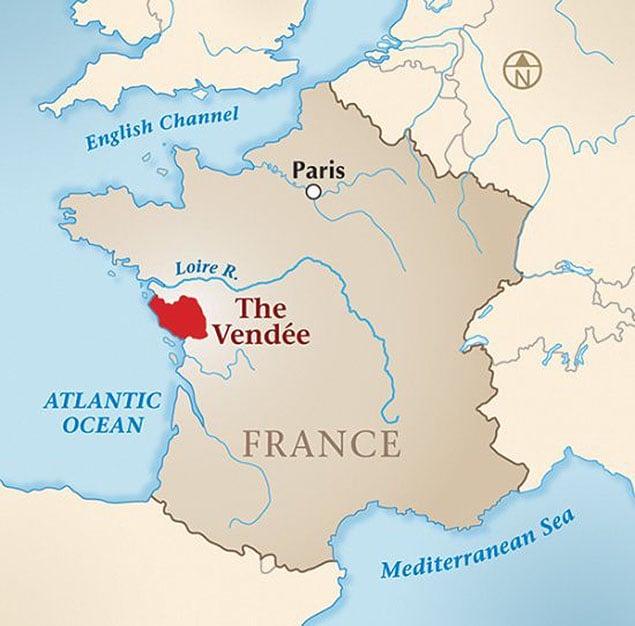 Little place that thinks big – France’s Vendee region has put itself firmly on the world map by sponsoring the Vendee Globe
Little place that thinks big – France’s Vendee region has put itself firmly on the world map by sponsoring the Vendee Globe
It’s about the size of an average Irish county. Yet right now, France’s modestly endowed Vendee region is being promoted as a place of world significance by extreme sportsmen taking part in a rugged sailing exercise with the most severe physical and life-threatening challenges, subsisting on a meagre diet which would rightly produce rioting in any self-respecting prison.
Welcome to the world of the Vendee Globe. That is, in the unlikely event that you aren’t already addicted to following it on a daily or indeed hourly basis. This still almost unbelievable round the world non-stop marathon continues to have an air of crazy novelty and enduring fascination, even though it was first staged in 1989.
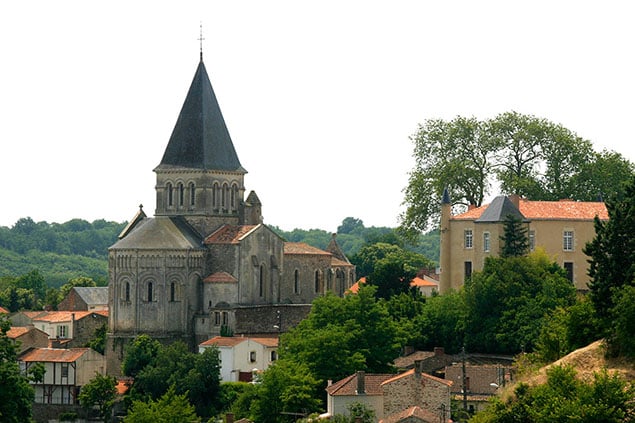 Peaceful countryside. Deep in the heart of the Vendee, the sea seems far away
Peaceful countryside. Deep in the heart of the Vendee, the sea seems far away
It boggles the mind to try and imagine the great French sailor Philippe Jeantot taking on the challenge of persuading the civil servants and politicians who run this relatively remote region of west France to permit, let alone sponsor, an event which is now utterly out on its own. Yet the regions of France quite rightly have an intense local pride. And if we in Ireland feel a tinge of envy at what they can achieve, just remember that last weekend it was announced that Wicklow Sailing Club had become the Mitsubishi Motors Club of the Year for 2017 thanks to their utter commitment to promoting the Round Ireland Race on a biennial basis, while at the same time continuing to function successfully as a club which caters for local sailing needs.
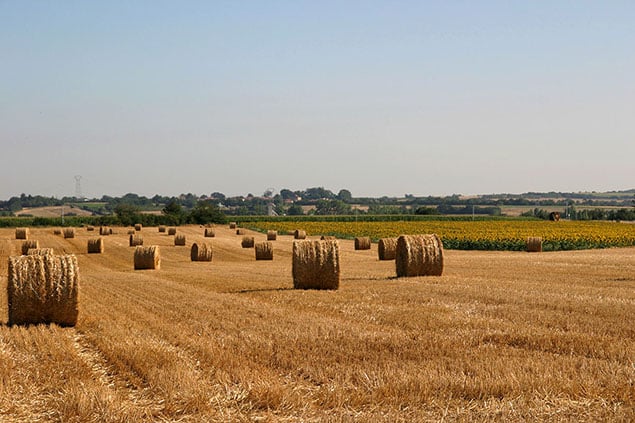 A summer cornfield in the Vendee is about as different as you can get…
A summer cornfield in the Vendee is about as different as you can get…
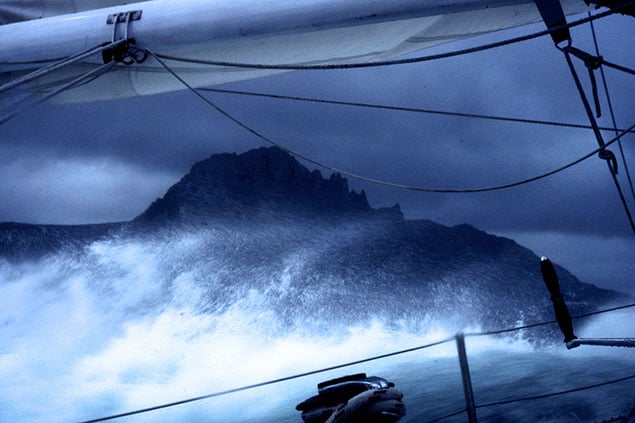 ….from rounding Cape Horn in a rising gale. Yet both are linked through the world’s most challenging race
….from rounding Cape Horn in a rising gale. Yet both are linked through the world’s most challenging race
It’s something which is unusual in an overly-centralized country like Ireland, where all major decision are made in the capital, and in sailing you’d expect one of the main centres such as Cork Harbour or Dublin Bay or Belfast Lough to be the home of the Round Ireland race. But it is dogged little Wicklow which has won through, and 2016’s race fully justified their faith.
However, in the Irish context it is a local sailing club which is setting the pace. But in France, it is the regional administration which has been persuaded to pull off a remarkable coup. Looking at the scale and publicity which accompanies the Globe race, you’d assume it starts and finishes in a major centre such as Brest, or Lorient, or La Rochelle. Au contraire. The Vendee Globe starts and finishes in the very artificial sand-surrounded port of les Sables d’Olonne, set on a long sandy coast off which just about the only object of interest is the intriguing little Biscay island of Ile d’Yeu.
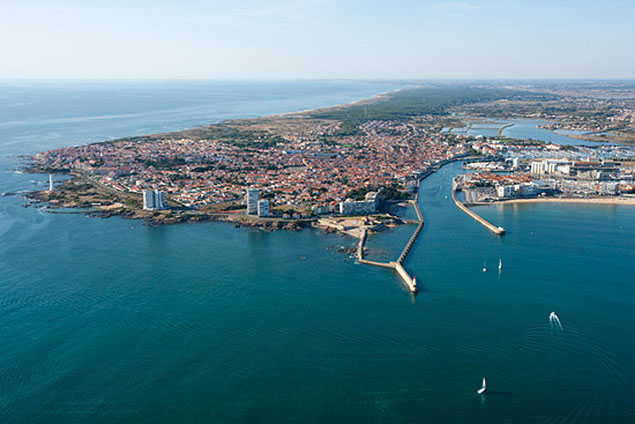 Les Sables d’Olonne, where the harbour is tucked in behind what used to be sand dunes
Les Sables d’Olonne, where the harbour is tucked in behind what used to be sand dunes
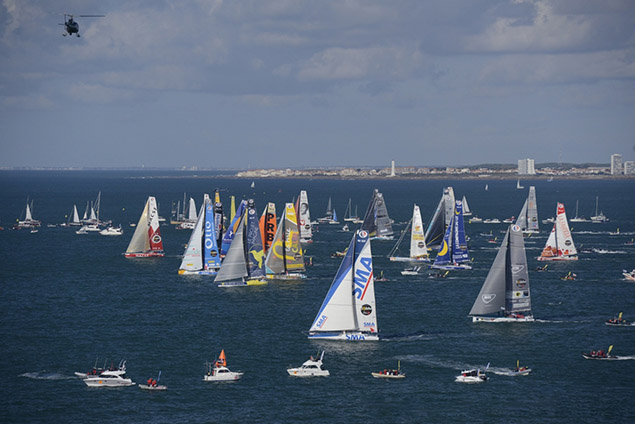 The start of the Vendee Globe 2016-2017
The start of the Vendee Globe 2016-2017
Yet despite the paucity of features of special interest along its sandy beaches, every three to four years sees Les Sables d’Olonne being swamped by hundreds of thousands of visitors when the Vendee Globe circus is in town. And this weekend, the focus sees the Race Headquarters move from their race-time base at the foot of the Eiffel Tower in Paris back to the quayside at Les Sables in anticipation of the finish, some time in the middle of next week, of the two fleet leaders.
Yesterday, gales on the Biscay coast prevented the re-installation of the super-tented Vendee Globe Village in Les Sables. But by today the command control should be broadcasting again on all media, and we can resume our daily doses of a fascinating event which is reaching its most crucial stage in an unexpected way.
For after a week in which severe storms have been sweeping most of Europe, a great big high pressure area is showing every sign of settling in over the southwest approaches to the Bay of Biscay right across the track which the two leaders – Armel le Cleac’h on Bank Populaire VIII and Alex Thompson closing up from 130 miles astern on Hugo Boss – will have to take to get to Les Sables.
C’est ridicule! The seas off northwest Spain - Galicia, Finisterre, whatever you want to call it – should be one of the stormiest places in the world in the latter half of January. Yet here it is, in an increasingly benign mood, with the final stages of the world’s breeziest race threatening to become a battle of the zephyrs.
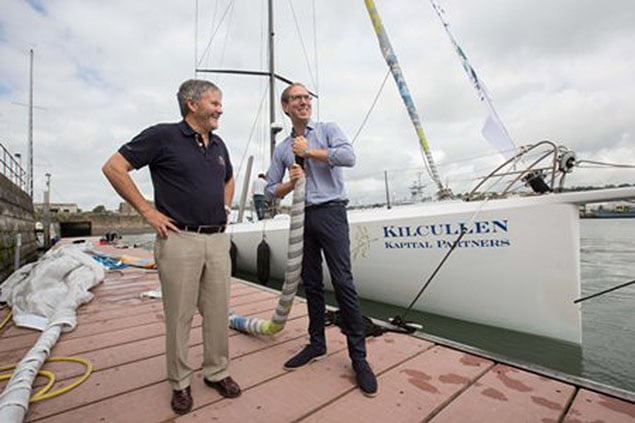 Enda O'Coineen and Stewart Hosford in Cork Harbour in 2015
Enda O'Coineen and Stewart Hosford in Cork Harbour in 2015
Under time-honoured traditional yacht racing tactics, all Le Cleac’h need to do is keep re-positioning himself so that he is directly between Thomson and the finish line. But these are not traditional yachts. Even in a zephyr, they can virtually create their own wind, and if the leader really does become so completely and utterly becalmed that he loses steerage way, the second-placed boat knows that his primary objective must be to maintain way even if it means actually heading away from the finish.
However, let’s face it, it is January, and it’s unlikely the total calm you might experience in high summer will ever settle in. That said, for le Cleac’h the situation is hugely challenging, for if there is one other skipper in the entire race who has the ability to pull off an audacious coup and snatch the lead, then it is 42-year-old Alex Thomson.
And in a sense, here in Ireland we can look on him as one of us. For five formative years of his childhood, he lived in the Crosshaven area, and his name can be found in the register of Templebreedy National School. His father Peter was a helicopter pilot on air-sea rescue duty, which meant that Alex was born in Bangor in North Wales as his father at the time was flying out of Anglesey, but then the move came to Cork airport, and the young Alex saw his first sailing off Weavers Point.
Sailing the seas of Cork at that time was young Stewart Hosford whose father Bill was one of the crew on Denis Doyle’s blue S&S designed Moonduster. Bill Hosford was also one of the consortium involved with Barry Burke in building the Ron Holland-desined Shamrrock racer-cruiser range, while for some added interest Bill and his wife Ann for ten years owned that deservedly renowned West Cork hostelry Mary Ann’s in the picturesque village of Castletownshend.
However, the challenge of life as an international banking executive drew young Stewart away from Cork, and he spent fifteen years in the City of London and another five in Edinburgh before the call of the sea returned, and he and his mates bought the Farr 65 Spirit of Diana in 2000 and linked up with the recent winning skipper in the Clipper Round the World Race, one Alex Thomson, to go racing. The rest is history.
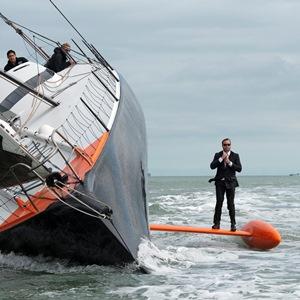 “Alex does the sailing and the stunts…..” A spot of keel-walking with Hugo Boss
“Alex does the sailing and the stunts…..” A spot of keel-walking with Hugo Boss
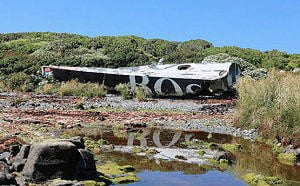 Even when things don’t go quite according to plan, somehow it still seems a success…
Even when things don’t go quite according to plan, somehow it still seems a success…
The synergy between the two men in creating a boat racing organization is extraordinary. Even though Stewart is now based back in Cork, life is totally peripatetic as he fulfills the role of CEO of Alex Thomson Racing, while Alex does the sailing and the stunts, and Sir Keith Mills is the third corner of a remarkable triangle for creating success.
The well-established link-up with Hugo Boss completed the package, and while on occasion things have gone spectacularly wrong, there’s something about an Alex Thomson Racing failure which makes it into a success. The man himself has a superhuman dedication and determination, and an ability to think completely outside the box, which makes their involvement in any event add greatly to its success.
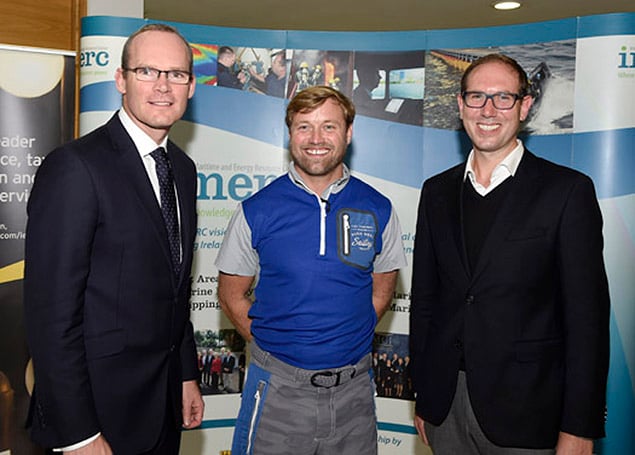 The then Minister for the Marine Simon Coveney with Alex Thomson and Stewart Hosford at a press briefing to put forward some proposals for developments on Cork Harbour
The then Minister for the Marine Simon Coveney with Alex Thomson and Stewart Hosford at a press briefing to put forward some proposals for developments on Cork Harbour
Most of us have lost count of how many different boats called Hugo Boss there have actually been, but there’s no doubt the current boat – after some setbacks which would have rebuffed a lesser squad – has evolved into on of the most formidable racing machines on the planet.
So even though it’s unlikely she’ll get starboard tack all the rest of the way to the finish in order for her lack of a starboard foil not to be a disadvantage, Hugo Boss racing has now reached such a level of attention that any outcome is ultra-newsworthy.
But though we talk of the Alex Thomson Racing challenges having reached a certain kevel, staying level is that last thing on the minds of these guys. They’ve all sorts of other ideas taking shape, and their track record is such that if they were so inclined, they could make a tidy living as consultants to nascent challenge projects. That is most unlikely. They’ve moved on a long way from Templebreedy. But even so, it still means a lot to Alex Thomson and Stewart Hosford when the latest Hugo Boss puts in an appearance at Crosshaven.
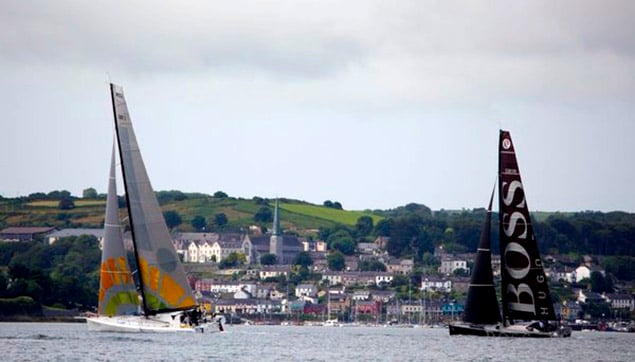 Enda O’Coineen’s Kilcullen Voyager and the previous Hugo Boss off Crosshaven, where Alex Thomson spent five years of his childhood.
Enda O’Coineen’s Kilcullen Voyager and the previous Hugo Boss off Crosshaven, where Alex Thomson spent five years of his childhood.
#moth – Stewart Hosford, the yacht racing industry executive who identifed Cork harbour's potential as a 'Global Yacht Racing Hub', has signed up a top Chinese Asset Management company as a sponsor of a high profile Moth regatta.
At a press briefing held at the Royal Thames Yacht Club, London, ZhongJin, one of Shanghai's leading Asset Management companies, was announced as Primary Regatta Sponsor for the 2015 Shanghai International Regatta. The Shanghai International Regatta presented by ZhongJin, is the first professional sailing event to take place on the Huangpu River.
Hosford, who grew up in Cork and manages British solo sailor Alex Thomson, said last October he was in 'discussions' to see how he can support Minister Coveney's ambitions for Cork Harbour.
Hosford, Managing Director of 5 West Ltd, co-organiser of the Chinese regatta commented: "We are delighted to welcome ZhongJin as Primary Regatta Sponsor for the first Shanghai International Regatta. ZhongJin are a highly respected organization in Shanghai, so it is fantastic that they have given their support to our regatta."
Also announced was the line-up of sailors due to take part in the Moth Invitational section of the regatta. Leading international sailors, including Chris Rashley (GBR), Josh McKnight (Aus) and Kalle Costa (NED), will make up a fleet of 12 Moths competing on the Huangpu River.
Chris Rashley who has finished in the top 5 in the last two Moth World Championships is very excited to be making history in Shanghai: "I am very much looking forward to competing in the Shanghai International Regatta presented by ZhongJin. I have been privileged to sail in some amazing places in my career, so to be one of the first professional sailors to compete on the Huangpu River is a fantastic."
Previous America's Cup World Series syndicate, China Team, will represent China in a head to head Match Racing series in M2 Catamarans against Team GREAT Britain. Team GREAT Britain will race under the colors of The GREAT Britain Campaign, which works to showcase the very best of what Britain has to offer. At the Press Briefing, China Team was represented by Chinese Olympic Gold Medallist Xu Lijia and Team GREAT Britain was represented by British ocean racing star Alex Thomson, both of whom are Official Regatta Ambassadors. The crews for both teams will be announced in the coming weeks.


























